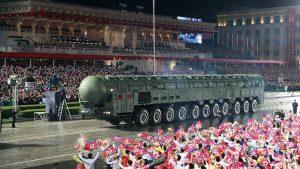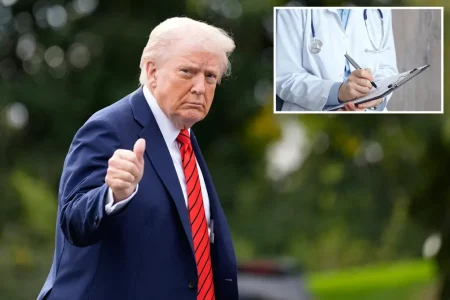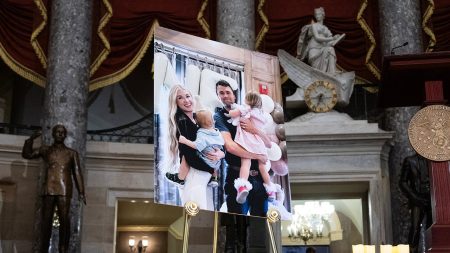Trump’s Week of Contrasts: A Character Study in Leadership Styles
In Washington’s political theater this past week, President Trump showcased the striking duality that has defined his presidency. Like a character in a modern political drama, Trump oscillated between conflicting personas—one moment displaying the calculated decision-maker his supporters admire, the next embodying the impulsive communicator that critics find alarming. These shifting presentations weren’t merely stylistic choices but fundamental expressions of his leadership approach that provided both his defenders and detractors with fresh evidence to support their existing views of his presidency.
The week began with Trump’s disciplined handling of delicate foreign policy matters, where he demonstrated the measured restraint that his allies consider presidential. In meetings with international leaders, he struck diplomatic tones and adhered closely to prepared statements crafted by his national security team. This version of Trump—methodical, strategic, and willing to defer to expertise—is precisely what his supporters point to when defending his fitness for office. His careful navigation of these complex diplomatic waters showcased the business-minded executive who, supporters argue, approaches governance with the same deliberative approach that brought him success in the private sector. This display of traditional presidential behavior temporarily quieted critics who question his temperament for high-stakes international negotiations.
Yet by midweek, a dramatically different Trump emerged on social media and in impromptu press interactions. Abandoning the carefully calibrated messaging of official channels, he launched into a series of provocative statements and personal feuds that immediately dominated news cycles. This unfiltered Trump—reactive, combative, and seemingly unbound by strategic considerations—provided his critics with exactly the kind of material they cite when questioning his suitability for the presidency. His willingness to engage in personal disputes and veer off-message frustrated even some allies who had praised his earlier composure. These moments of apparent spontaneity reflect what supporters characterize as authentic communication and what detractors view as dangerous impulsivity. The stark contrast between these approaches occurring within the same week highlighted the persistent tension between Trump’s instincts and the traditional expectations of presidential behavior.
The administration’s policy initiatives reflected this same duality. On economic matters, Trump rolled out a comprehensive tax proposal with meticulous attention to detail and messaging coordination across departments. Republican lawmakers praised the methodical approach, contrasting it with previous policy rollouts. Simultaneously, however, his abrupt announcement regarding military personnel decisions caught the Pentagon off-guard, with senior officials scrambling to understand and implement directives they hadn’t been consulted on. This pattern—careful orchestration in some domains and sudden, unilateral action in others—created an administration that seemed to operate under two different management philosophies simultaneously. The whiplash effect left both government officials and observers constantly recalibrating their understanding of how decisions were being made at the highest levels.
Media coverage reflected this bifurcated reality, with outlets seemingly covering two different presidencies. Conservative media highlighted moments of presidential gravitas and policy accomplishments, constructing a narrative of effective leadership temporarily distracted by trivial controversies manufactured by opponents. Progressive outlets emphasized the unscripted outbursts and policy contradictions, portraying an administration in constant chaos, occasionally stumbling into coherent action. Neither portrayal captured the full complexity of a president who genuinely contains these contradictory approaches. The divided coverage reinforced existing partisan perspectives, with each side selecting evidence that confirmed their predisposed view of Trump’s presidency while dismissing contradictory information as either isolated incidents or strategic deception.
Perhaps most revealing was how these dual personas affected Trump’s relationship with his own administration. Staff members have developed sophisticated systems to accommodate both versions of their boss—creating structures to harness his decisive instincts while building safeguards against impulsive decisions that might undermine larger objectives. This internal adaptation to presidential duality has become a defining feature of the administration’s operations. What remains unclear is which version more authentically represents Trump’s true leadership philosophy. The answer may be that both are equally genuine expressions of a complex personality thrust into the world’s most scrutinized leadership position. As the week concluded, Washington was left with the same fundamental question that has defined the Trump presidency: Is the nation witnessing carefully calculated disruption of political norms or the natural consequences of an unprecedented temperament in the Oval Office? The evidence to support either conclusion was abundant, depending entirely on which version of Trump one chose to emphasize.










